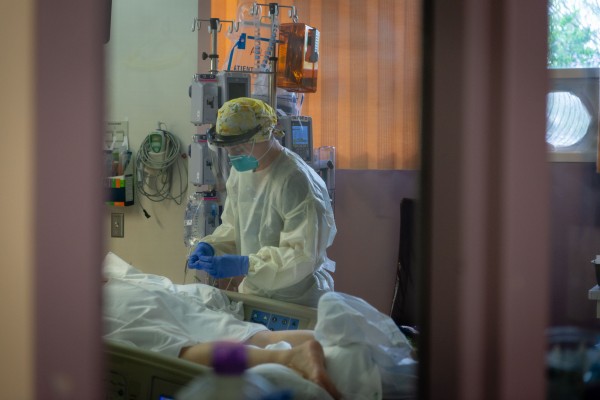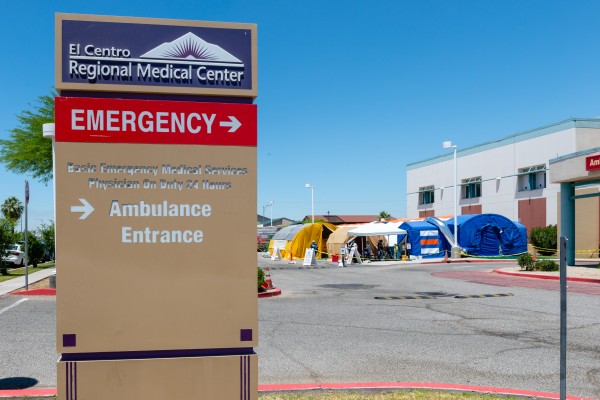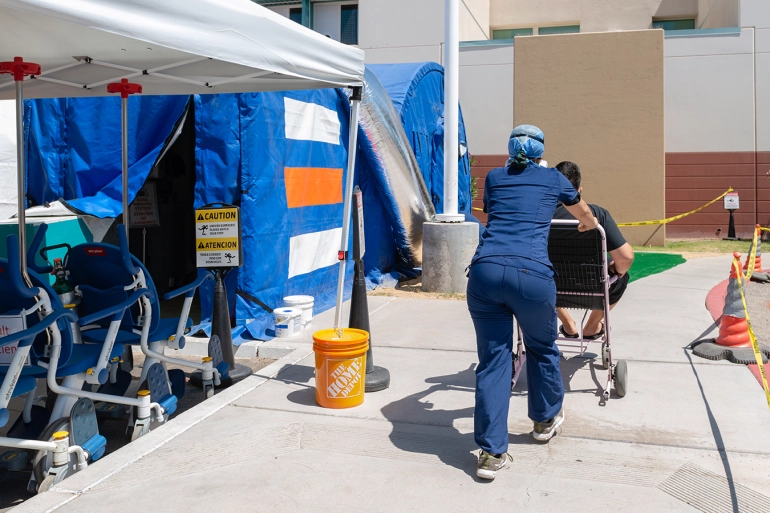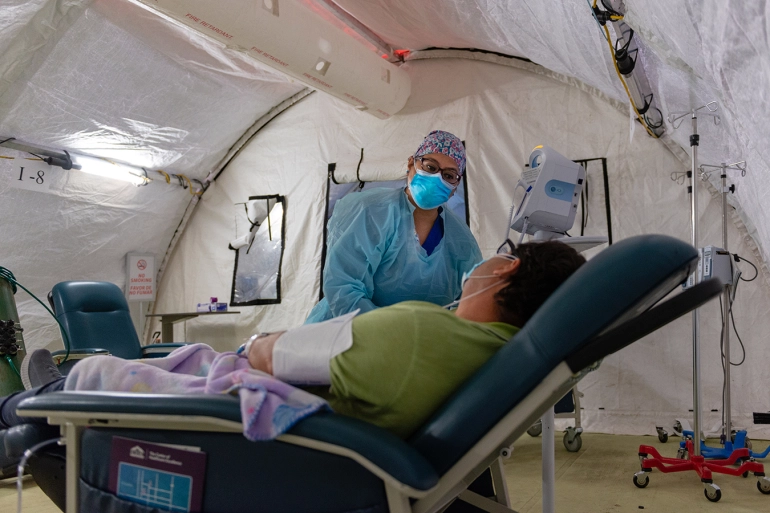
An intensive care nurse tends to a COVID-19 patient in a negative pressure isolation room at Scripps Mercy Hospital Chula Vista.
CHULA VISTA, Calif. — Even as most California hospitals have avoided an incapacitating surge in coronavirus patients, some facilities near the Mexican border have been overwhelmed. They include El Centro Regional Medical Center in Imperial County and Scripps Mercy Hospital Chula Vista in San Diego County, which link the spike in COVID-19 patients to their communities’ cross-border lifestyle.
Some U.S. citizens and legal residents who live in Mexico are crossing the border from Tijuana and Mexicali into the U.S. for treatment. Dr. Juan Tovar, an emergency physician and chief operations executive for Scripps Mercy Hospital Chula Vista, said 48% of COVID-positive patients who visited the emergency room between May 24 and May 30 said they had recently traveled to Mexico. That figure jumped to 60% between May 31 and June 2. The hospital is about 10 miles from the San Ysidro Port of Entry, the busiest land border crossing in the Western Hemisphere.
Only about 5% of COVID-19 patients reported they’d recently been to Mexico at Scripps’ three other emergency rooms farther north, he said.
Email Sign-Up
During the pandemic, health care is a top concern for all. So we want to hear from you: What do you like about California Healthline’s coverage? How can we improve? Please take our short survey.
“We are now transferring COVID-19 patients out of Chula Vista to other Scripps hospitals farther north on a fairly regular basis — 21 over the last week — to help decompress our hospital here,” Tovar said.
About two hours east, El Centro Regional Medical Center was so overwhelmed by COVID-19 patients it had to divert some to health care facilities in San Diego, National City and elsewhere. There have been more than 2,025 confirmed cases in Imperial County, which has the highest COVID-19 hospitalization rate in the state, said Andrea Bowers, special projects coordinator for the county health department.
“We know that our community has family on both sides of the border, so we’re relating the uptick to Mother’s Day weekend,” said Suzanne Martinez, assistant chief nursing officer at the medical center. “That means more risk as people travel back and forth over the border.”
KHN’s Heidi de Marco visited the intensive care units at both hospitals and documented the efforts to keep patients alive.

Patients suspected of having COVID-19 are screened inside a makeshift triage center outside El Centro Regional Medical Center in El Centro, California. The hospital is trying to keep patients who do not require acute care out of the hospital to limit spread. (Heidi de Marco/California Healthline).

Nurse Brianna Mendoza wheels a patient with coronavirus symptoms into the triage tent on May 28, 2020. “I’ve had a few people saying that they have had to cross the border to come here” because they prefer to get care in the U.S., Mendoza says.

Sylvia Cervantes, a medical assistant, assesses a patient who might have COVID-19. Cervantes usually works in the oncology department but was assigned to help in the triage tent.
This photo essay includes many more photos, which you can find at this link.













